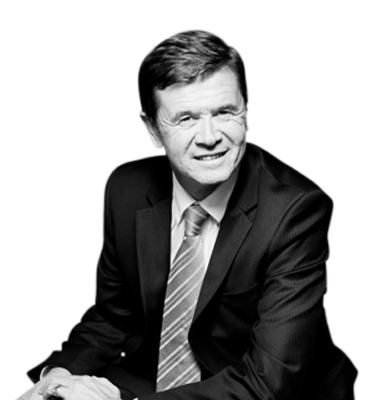This "qualitative" era focused solely on brand image has now come to an end. The arrival of the carbon tax in France - though momentarily delayed by decree of the Conseil Constitutionnel - will soon force companies with more than 500 employees to publish a carbon report, identify the largest sources of greenhouse gas emissions, and take concrete measures to limit these emissions. In short, the tax will take us from the qualitative to the quantitative era.
This paradigm shift will make us move from "Green IT" to "IT for Green", signifying a positive and measurable contribution by Information Systems to the reduction of greenhouse gas emissions.
In practice, the paradigm shift announces the launch of 3 types of initiatives:
1) Limiting emissions within IT departments. In this realm, the main goal is to implement technology developed in the fields of virtualisation and Cloud Computing. By virtualising 8,000 servers in the framework of the Ecocenter project, Orange increased the average use of each machine from 15% to 60% of maximum capacity, thus saving 2.5 GWh per year - the amount of electricity consumed per year by a town of 10,000 inhabitants. By virtualising 100,000 work posts, Orange has extended the lifespan of these machines to 5 years - instead of 3 years as was previously the case - saving x tonnes of CO2 per year.
2) Savings in other areas through the use of information technology. Here, there are numerous examples. A consumer goods manufacturer can cut its CO2 emissions by 2,700 metric tons per year by replacing international flights with telepresence sessions to communicate with its 15 major sites located in America, Europe and Asia. Equally, a ground transportation firm can save 5% in fuel (thus reducing CO2 emissions by 5%) by remotely managing its fleet of 1,000 lorries, at once optimising logistics and ensuring permanent communication between drivers and HQ. Orange has developed a remote monitoring solution for heart rate measurement systems with the company Sorin to provide a better quality of life to thousands of patients, while also reducing their need to frequently travel to the hospital.
3) The installation of systems for measuring greenhouse gas emissions is a task often assigned to IT departments. For example, the IT department of a major food industry group demonstrating a strong interest in sustainable development, has adopted a tool for measuring CO2 emissions in each of its divisions. Furthermore, the company has tied a large portion of each executive director's bonus - 30% - to the achievement of CO2 reduction objectives in their respective divisions. More and more, IT departments are becoming the barometer and driving force for environmental goals.
A practical effect of carbon footprint regulations is the widespread use of the Life Cycle Analysis for a company's flagship products and the development of new products. At Orange Business, we're standardising this practice, both for our flagship products (Business VPN, for example) and our products with a high environmental benefit (Videoconference, Virtualisation, Machine-to-Machine). This analysis helps us to optimise the ecofriendliness of a product as early as the design phase and calculate its carbon footprint before we launch it. This practice has also lead to the standard use of eco labels for mobile devices sold in our stores, allowing our environmentally conscious clients to make informed decisions.
Green IT has indeed arrived at a turning point. No longer simply something to talk about when discussing sustainable development, it's now becoming a critical tool for companies who plan to set up a coherent and quantifiable strategy for limiting greenhouse gas emissions. "Green IT" is dead; long live "IT for Green"!
Other articles on the same subject :
Green IT regains centre stage, as economy begins thaw
Top tips for greening your data center
Message for Copenhagen: ICTs combat climate change
